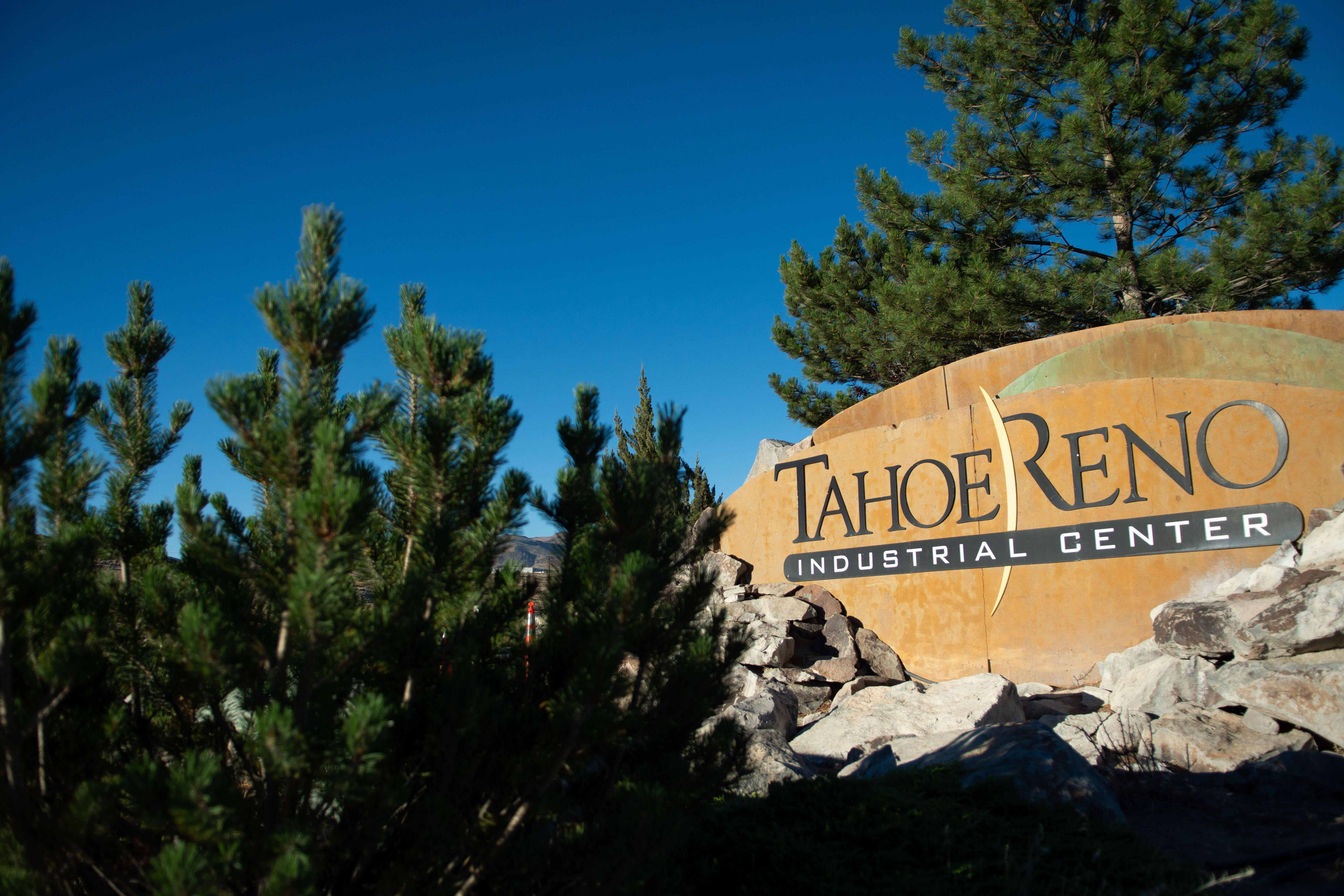Tahoe-Reno Industrial Center says water supply solid as pipeline moves forward, state denies extra groundwater permits

Even with a recent denial of extra groundwater by state regulators, a lawyer for the Tahoe-Reno Industrial Center (TRIC) said the expansive park — home to the Tesla Gigafactory and a Switch data center — remains on firm footing when it comes to its most valuable resource.
Last month, Nevada’s top water regulator denied nine applications to expand the industrial center’s groundwater use. But an attorney for the development said the decision would have no impact on the water supply, as the applications hadn’t been factored into TRIC’s resource plans.
“It doesn't affect the water supply at all that is planned to be used by [TRIC] for growth,” said Robert Sader, an attorney for the developer and the site’s general improvement district.
The decision comes as TRIC looks to secure more water through a 13-mile effluent pipeline that will convey treated wastewater from the region’s main sewage plant in Sparks. Sader said TRIC expects to complete the engineering for the pipeline by this spring and put out a bid for construction soon after.
The pipeline would allow companies at the park to use 4,000 acre-feet of treated wastewater for industrial use, adding to a portfolio at TRIC that includes rights to pull water from the Truckee River and an adjacent aquifer (an acre-foot is about the amount of water than can fill a football field to a depth of one foot). Sader said the pipeline is proceeding even after companies nixed a state-backed funding package.
An interim legislative board had originally approved $35 million in bonds to build the pipeline if the companies paid into a Special Assessment District and accepted liens on their property. After one company pulled out of the financing plan, the deal was restructured, and it ultimately fell apart. The remaining companies decided to front the cost of the pipeline, with the potential of being paid back through a Tax Increment Area that was approved by Storey County.
Between the existing rights and the water piped in from Truckee Meadows Water Reclamation Facility, TRIC should have enough water to meet growth at the industrial park, Sader said. The additional applications for extra groundwater were filed in 2012, about two years before the state approved a tax incentive package to lure Tesla to the site. Seven years later, those applications were denied by state water officials, who determined on Jan. 25 that there was no water left to appropriate.

Sader said TRIC would not appeal the ruling. The industrial park, he said, would be unlikely to prevail. Obtaining the extra groundwater rights had been a longshot, given that they sit within the Truckee River basin, which is highly regulated by historic court decrees and agreements. As a result, he said the industrial park never incorporated them into their planning for growth.
"We have never planned on resources that we didn't have," Sader said.
The groundwater permits, filed before other water users foresaw the industrial park being built out to the extent it is today, were protested by several Truckee River users as “speculative in nature.”
The protests and denial of the groundwater applications reflect the Truckee’s complicated water rights structure and the growing acceptance by the water community to manage groundwater and surface water as a connected resource. In the past, the two had been viewed as separate. But studies have shown that over-pumping groundwater can diminish adjacent streamflows.
TRIC’s permits were protested by downstream water users, including the Pyramid Lake Paiute Tribe, Churchill County and the Truckee Carson Irrigation District, which serves water to Fallon farmers. It was also protested by the Bureau of Reclamation, which oversees the Truckee Canal, a diversion from the river that carries water from Sparks to Fernley and Fallon farmers.
If too much groundwater or surface water is diverted out of the upstream portions of the Truckee River, users downstream could be detrimentally affected, especially during dry years. It could mean, for instance, a reduction in flows to Pyramid Lake, the river’s terminus, that could harm efforts to increase populations of endangered fish like Lahontan cutthroat trout and the Cui-ui.
In addition to the use of public funds, it is one reason some have criticized the effluent pipeline.

City planners for Reno and Sparks have cast the deal as a win-win. On one hand, it would help the companies meet their demand for future water with recycled wastewater. At the same time, the deal would solve a looming issue facing the municipalities.
Because of regional growth, driven in part by the presence of those companies, Reno and Sparks will likely face a sewage capacity issue in the coming years. Regulations limit how much treated effluent water managers can discharge into the Truckee River. As a result of the discharge standards and more demand for growth, the municipalities would have to expand the plant’s capacity or find a place to move effluent, which they can achieve through leasing it to TRIC.
But delivering the treated wastewater to TRIC came with its own set of challenges. As a result of the deal, 4,000 acre-feet of treated wastewater would no longer be discharged to the river, potentially reducing the streamflow. To offset the reduction of water to users downstream, TRIC had pledged 1,500 acre-feet of water rights and the state had pledged about 1,500 and 2,200 acre-feet of rights. The Truckee Meadows Water Authority will make up the remaining 300 to 1,000 acre-feet.
As with the use of public funds, some have criticized the use of publicly owned water rights to offset the diversion. The Reno Gazette Journal reported last year that Reno Assemblywoman Teresa Benitez-Thompson questioned the water rights aspect of the deal.
“In a state where water is everything … I have never heard of water just being given away,” she said. “We are essentially giving this water, we will not be getting any compensation for this water.”
